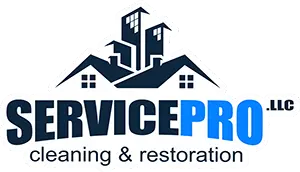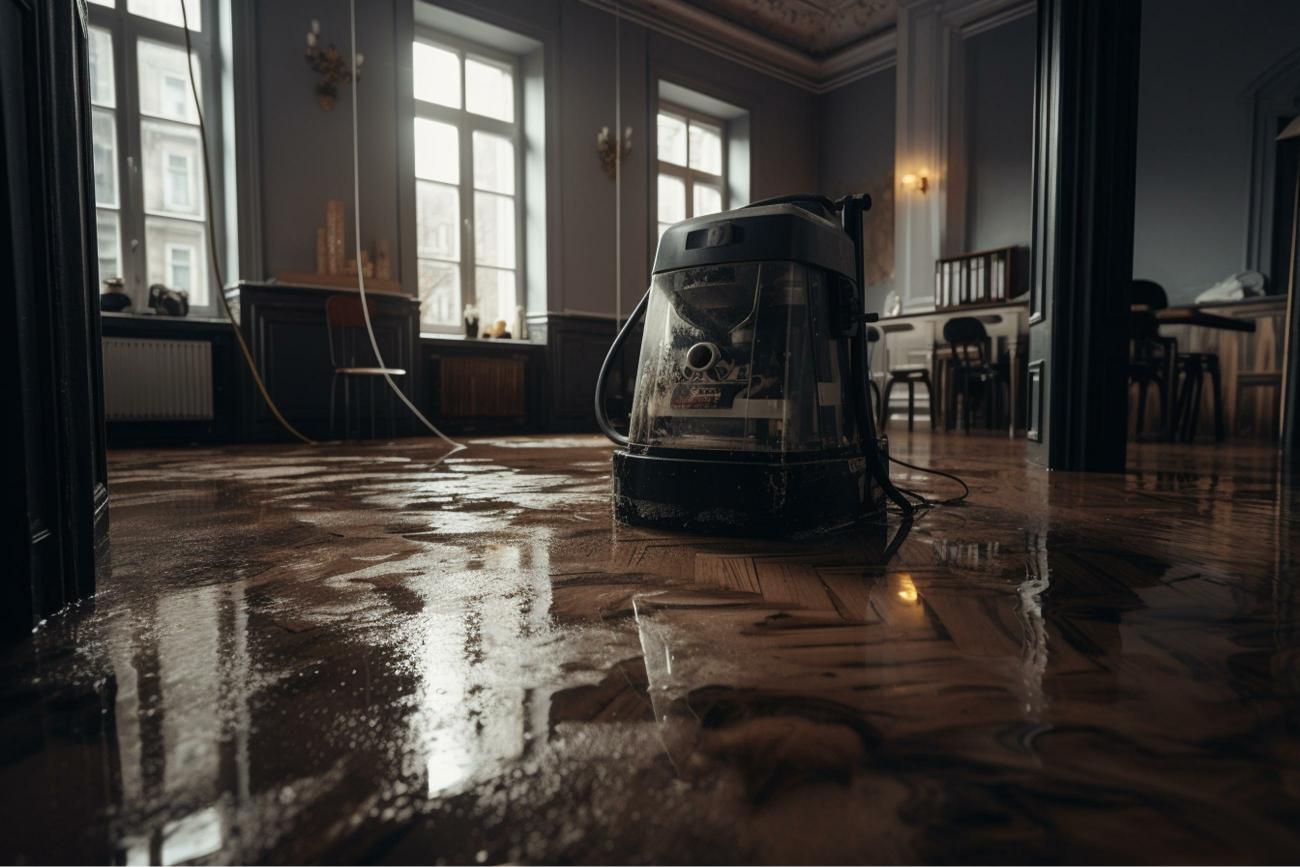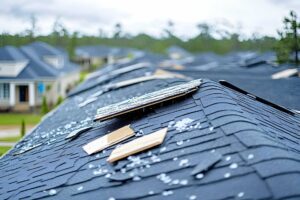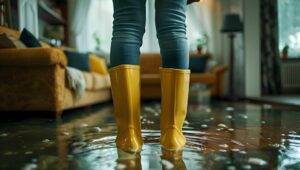When storm damage strikes, water intrusion can cause significant issues if not addressed promptly. You’ll need to assess the extent of the damage carefully and take immediate action to ensure your safety and minimize losses. Understanding the right tools and techniques for effective water removal is vital. But what steps should you take first to safeguard your home and health? Let’s explore the essential methods for storm damage water removal.
Key Takeaways
- Start with a thorough damage assessment to identify leaks, structural issues, and water intrusion sources for effective water removal planning.
- Use personal protective equipment (PPE) to ensure safety from mold, bacteria, and sharp debris during the water removal process.
- Employ submersible pumps and wet/dry vacuums for efficient extraction of standing water and moisture from affected areas.
- Consider hiring professional water removal services for advanced equipment and expertise to minimize damage and ensure thorough drying.
- Implement preventative measures such as maintaining gutters and drainage systems to reduce the risk of future storm damage and water accumulation.
Understanding Storm Damage and Its Impact
When storms strike, the damage can be devastating, often leaving you feeling overwhelmed. Understanding the storm’s impact is essential for effective recovery.
You’ll want to start with a thorough damage assessment of your property. Look for signs like roof leaks, shattered windows, and water intrusion in your basement. Each of these issues can lead to further complications if not addressed promptly.
Remember to check your home’s structural integrity; even minor cracks can indicate serious problems. Take photographs for insurance purposes and document everything meticulously. This will help you file claims and guide you in prioritizing repairs.
Assessing the Severity of Water Damage
Evaluating the severity of water damage is essential for effective restoration and prevention of further issues. Start your damage assessment by identifying key severity indicators, such as the source of the water, the duration it’s been present, and the materials affected.
Look for discoloration, warping, and mold growth, which signal more extensive damage. Pay attention to the areas most impacted, like basements or lower levels, where water tends to accumulate.
Assessing moisture levels with a hygrometer can help you gauge how deep the water has penetrated your materials. Remember that even small leaks can lead to significant problems if left unaddressed.
Safety Precautions Before Water Removal
Before you start removing water, it’s essential to equip yourself with the right personal protective equipment, like gloves and boots, to safeguard against contaminants.
You’ll also need to prioritize electrical safety by turning off power sources in the affected area to prevent shocks or fires.
Taking these precautions protects you and ensures a more efficient water removal process.
Personal Protective Equipment
Ensuring your safety is paramount during water removal after storm damage, and using the right personal protective equipment (PPE) is a critical first step.
Understanding PPE importance can’t be overstated; it protects you from hazards like mold, bacteria, and sharp debris. When it comes to gear selection, opt for waterproof gloves, sturdy boots, and masks that filter out airborne particles. A durable rain suit can also shield you from contaminants while keeping you dry.
Remember, you’re not just protecting yourself; you’re fostering a sense of community by setting an example for others. Prioritizing your safety through proper PPE ensures you can effectively assist in recovery efforts without compromising your well-being.
Equip yourself wisely, and you’ll feel empowered to tackle the challenges ahead.
Electrical Safety Measures
After securing the right personal protective equipment, the next step involves addressing electrical safety measures to prevent accidents during water removal.
You must be vigilant about potential electrical hazards that could cause serious harm. Here are essential safety tips to keep in mind:
Turn off the power: Always switch off the main circuit breaker before entering flooded areas.
Use ground-fault circuit interrupters (GFCIs): These devices can help prevent electrical shocks in wet environments.
Inspect cords and equipment: Check for damage before use, ensuring they’re safe for operation.
Stay dry: Use rubber boots and avoid standing in water while working near electrical sources.
Tools and Equipment for Effective Water Extraction
When facing the aftermath of a storm, having the right tools and equipment for effective water extraction can make all the difference in preventing further damage to your property. You’ll want to make sure you have essential equipment ready to tackle the situation efficiently.
Here’s a quick overview of some vital water extraction tools:
| Tool/Equipment | Purpose |
|---|---|
| Submersible Pump | Removes standing water quickly |
| Wet/Dry Vacuum | Extracts moisture from carpets |
| Dehumidifier | Reduces humidity, preventing mold |
Using these water extraction tools will help you manage the situation effectively. Remember, timely action is key to minimizing damage and facilitating a quicker recovery. By equipping yourself with the right essential equipment, you can feel more empowered and supported during this challenging time.
Step-by-Step Process of Water Removal
When faced with storm damage, your first step is evaluating the extent of the water damage in your space.
This initial assessment guides the effective removal techniques you’ll need to implement, ensuring you address both visible and hidden moisture.
Let’s explore the essential steps you’ll take to restore your home effectively.
Assessment of Water Damage
As you begin assessing water damage, it’s crucial to approach the situation methodically to ensure that no detail is overlooked.
Start with water source identification to determine the origin—this will guide your next steps. Next, classify the damage based on severity and type.
Consider these key factors:
- Areas affected by standing water
- Materials impacted (drywall, flooring, etc.)
- Duration of water exposure
- Presence of mold or mildew
Effective Removal Techniques
To effectively remove water damage, follow a structured step-by-step process that ensures thoroughness and efficiency.
Start by gathering essential tools: a wet/dry vacuum, fans, and dehumidifiers. Use water extraction methods like the vacuum to remove standing water.
Next, ventilate the area by opening windows and placing fans strategically to promote airflow. For DIY water removal, focus on drying out walls and floors using absorbent materials.
Monitor humidity levels with a hygrometer, ensuring they stay below 60%.
Finally, inspect for mold growth and treat affected areas promptly.
Preventing Mold Growth After Water Damage
Although water damage can be devastating, taking swift action to dry out affected areas is essential for preventing mold growth.
Mold thrives in damp environments, so effective humidity control is key. Here are some steps you can take for mold prevention:
- Remove standing water immediately.
- Use fans and dehumidifiers to circulate air and reduce moisture.
- Clean and disinfect any surfaces that have been wet.
- Monitor humidity levels, keeping them below 60%.
Professional Water Removal Services
When water damage strikes, you might feel overwhelmed and unsure of what to do next, but professional water removal services can provide the expertise needed to restore your space efficiently and effectively.
These experts understand the urgency of flood cleanup, acting swiftly to minimize damage and prevent further complications. They typically offer 24/7 emergency response, ensuring you’re never left alone in a crisis.
Using advanced equipment, they extract water, dry affected areas, and monitor moisture levels to ensure thorough restoration.
Their trained technicians assess your situation with a detail-oriented approach, identifying hidden moisture that could lead to mold growth later.
By trusting these professionals, you gain peace of mind and access a network of support that understands the emotional toll of water damage.
You deserve to feel safe and secure in your home, and professional water removal services can help you achieve that.
Long-Term Solutions for Storm Damage Recovery
Recovering from storm damage involves more than just immediate water removal; it requires an all-encompassing strategy for long-term resilience.
You need to focus on restoration techniques and long-term planning to safeguard your home and community. Here are some key strategies to take into account:
Invest in quality materials: Opt for water-resistant building materials to minimize future damage.
Enhance drainage systems: Verify gutters and downspouts are clear and effective to redirect water away from your property.
Implement regular maintenance: Schedule routine inspections to catch potential issues before they escalate.
Create an emergency plan: Develop a plan that includes evacuation routes and emergency contacts to foster community support.
Wrap-Up
In the aftermath of storm damage, your swift action can be the difference between a ruined home and a restored sanctuary. Picture yourself maneuvering through the damp chaos, equipped with pumps and vacuums, reclaiming your space from water’s relentless grip. By prioritizing safety and employing the right tools, you’re not just removing water; you’re safeguarding your future. As you step into the recovery journey, remember that each effort brings you closer to a dry, mold-free haven, ready to welcome warmth and peace once again.




